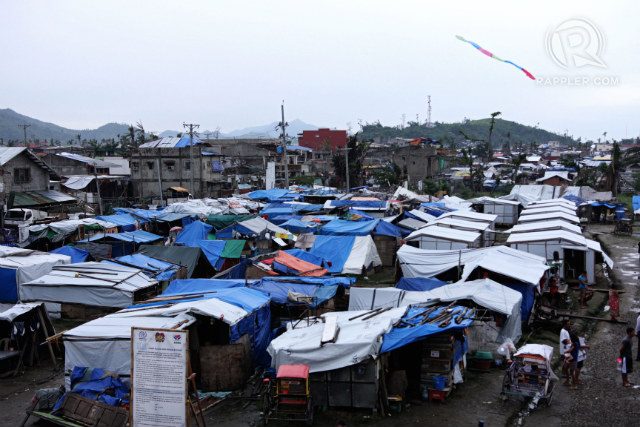SUMMARY
This is AI generated summarization, which may have errors. For context, always refer to the full article.

MANILA, Philippines – An investigating team of social welfare officials has recommended new guidelines on the distribution of emergency shelter assistance (ESA) for disaster victims after it discovered loopholes in the process applied to victims of super typhoon Yolanda.
This was among the initial findings of the Department of Social Welfare and Development’s ongoing investigation into the ESA funds for Yolanda victims released Friday, November 4. (READ: DSWD to prioritize review of Yolanda rehabilitation projects)
DSWD’s Disaster Response Assistance and Management Bureau (DREAMB) is currently crafting guidelines on the distribution of ESA for future disasters, it said in the report.
Among the issues spotted in the investigation, led by Assistant Secretary Aleli Bawagan, is the issuance of Memorandum Circular 24 by then Social Welfare Secretary Corazon Soliman on November 21, 2014.
MC 24, the report said, prompted a revalidation of the beneficiaries’ list earlier submitted to the Office of the President Assistant for Rehabilitation and Recovery (OPARR).
MC 24 disqualified those living in danger or “no build zones” and those earning more than P15,000 a month from receiving ESA, as well as victims who have been given shelter assistance by non-governmental organizations (NGO).
The DSWD said in its report that MC 24 was “interpreted differently” by the local government units (LGUs).
“Some coastal communities in Iloilo were given their ESA, but not in Leyte and other provinces. Beneficiaries who lived in ‘danger zones’ were excluded despite the absence of any issuance that their community is in fact located in a ‘danger zone’,” it said.
“MC 24 stipulated that ESA beneficiaries should not be recipients of shelter assistance from other NGOs, but since the assistance from various organizations was not closely monitored, this provision was again implemented differently by LGUs,” it added.
Vouchers sold to non-beneficiaries
The DSWD also discovered that the “wide discretion” given to barangay officials in identifying ESA beneficiaries was partly to blame for the poor implementation of the program.
Some families included in the list of beneficiaries have not lived in the barangays they had been listed under, even before Yolanda, though they are in the local voters’ roster. There were also cases of one household with two ESA beneficiaries, the probe showed.
The DSWD also discovered that some people bought ESA vouchers worth P10,000 from beneficiaries for only P8,000. The victims reportedly agreed to this arrangement as they needed hard cash after losing livelihood opportunities post-disaster. (READ: Agencies sign deal to speed up housing for Yolanda victims)
According to the investigation, the DSWD has aided the construction of 667,429 partially damaged homes and 468,528 totally damaged homes as of August 15, 2016.
The initial report also said that while a million victims have received ESA, there were still thousands – Social Welfare Secretary Judy Taguiwalo had earlier pegged this number at 200,000 – who have not.
With only P45.8 million left to distribute to the families, each stand to receive an ESA of just over P200.
Of the said amount, P10.7 million is from DSWD Region 8, and the remaining P35.1 million from cash donations.
The agency is currently eyeing to request funds from the Office of the Civil Defense (OCD) to augment its resources. (READ: IN NUMBERS: 2 years after Typhoon Yolanda) – Rappler.com
Add a comment
How does this make you feel?
There are no comments yet. Add your comment to start the conversation.